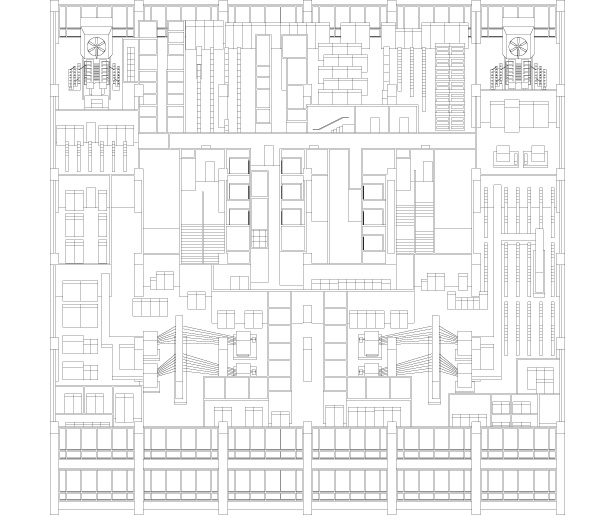Ether 18 The Virtual and the Real

The virtual is generally perceived as a drive against the spatial, or physical world. Nevertheless, the virtual world requires an infrastructure that exists in the physical and spatial world. Though ether is formless, it has to be created. Its production requires an enormous amount of physical hardware and consistent expertise.
Because of this, ether is primarily produced at nodes and locations where key players can meet and collect in front of, and behind cameras and computers. Massive telecommunicational urban hubs like One Wilshire and their radial networks make the virtual world possible, and firmly ground it into the concrete cityscape. Once this raw data of ether is created, it has to be stored and organized through stable control centers. These control centers, filled with row after row of servers generate an enormous amount of heat and require vast cooling systems with multiple back-up power units in order to function without interruption. Constant monitoring of these systems is vital as interruptions affect the entire system. Once the data has been collected, it has to be distributed outside of the building. Fiber optic cable is currently the most effective way of transmitting large quantities of data from out of the building into to the rest of the world. This cable is expensive to lay and requires a significant negotiation of both civic, private, and even international property as when fiber crosses national boundaries.
Telecommunication companies cannot afford all of these investments individually and have opted to pool their resources at a single location providing connectivity close to the transmission source. Through One Wilshire, virtually all of the global market leaders share a physical investment on the West Coast. Being “plugged in” is their literal need, not just an abstract notion.